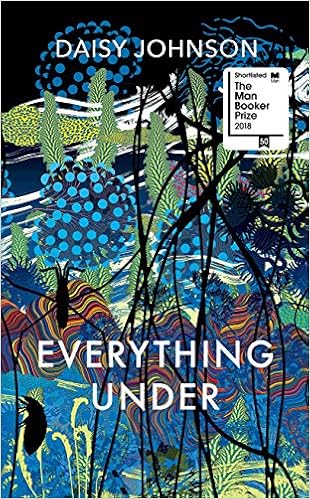 My book club decided
to read a book by a local author so this one, written by a couple residing in
the area, was chosen. Their novel
purports to be “based on the stories of immigrant children to Canada, including
the British Home Children.”
Unfortunately, it often reads more like a history book than a
novel.
My book club decided
to read a book by a local author so this one, written by a couple residing in
the area, was chosen. Their novel
purports to be “based on the stories of immigrant children to Canada, including
the British Home Children.”
Unfortunately, it often reads more like a history book than a
novel.
The book tells the
story of three boys: Skip, Benjy and
John Buchan, the latter character based on a real person who settled in the
part of Ontario where I live. Skip is
orphaned and Benjy is forced to leave his home; the two end up living on the
streets of London. John leaves Scotland
looking for work but is unsuccessful and decides to immigrate to Canada. On the ship, John becomes friends with Skip
and Benjy who also decided to emigrate.
The book follows their lives in Canada for several years as they look
for the jobs and family they did not have in England.
The book is 400+ pages
but could be much shorter if all the extraneous details were deleted. For instance, the following paragraph is
totally unnecessary: “The British Isles,
made up of four distinct countries, England, Ireland, Scotland, Wales, was
controlled from England where the largest population resided. This island state, sitting close to the
European continent, was bound to the north by the North Sea and, to the west,
by the Atlantic Ocean” (2). What’s with
the geography lesson? At different
points, the reader is given detailed information about terraced houses (9), a
history of Leicester and Lady Jane Gray (65 – 70), a description of the
pasturing habits of Herdwick sheep (91) and specifics about the Laurentian
Mountains (297). Did you know that
William Wordsworth’s mother lived in Penrith (89)? This type of irrelevant information crops up
again and again and again.
What is also
problematic is that the information isn’t always even correct. The boys are told that, “’It’s the eggs of the
Beluga whale. . . that provide the Russian people with black caviar . . . the
huge water mammals swam from Canada all the way across the Atlantic Ocean to
the waters of Russia’” (132). The Belugas
found in the St. Lawrence do not swim across the Atlantic, and it’s not a
mammal but a fish, the Beluga sturgeon, which provides the roe for caviar! Did you know that “’Although the Rocky
Mountains extend all the way into Mexico, the finest part is the Canadian
section because this is mainly a natural mountain range. Our neighbours to the south see their section
of the mountains as being largely converted into parks’” (282). The authors seem to have confused Mexico and
New Mexico! And including mountains in
parks causes the mountains to be transformed?
And anyone who believes that Renfrew, Ontario, is in northern Ontario
(379) has never looked at a map of the province!
Then there’s the
repetition! We are told “the rich
factory owners lived off the backs of the poor and would readily sacrifice anyone
if they could profit from their actions” (4) and “Not content with the huge
profits gained on the backs of hard working families the rich factory owners
were now turning to the use of semi-automatic machines” (88) and “a few getting
rich on the backs of the many who were
desperately poor” (91) and “History has shown the rich will, all too often, walk
over everyone as they climb to the top of the heap” (109) and “the rich got
richer on the backs of the poor” (110) and “There would always be a class of
people who would readily clamber over the backs of the less able to gain riches
they hardly deserved” (138). The value
of oxen to farmers is discussed on pages 148 – 149 and then repeated on page
186 and again on page 222. The need for
farmers to have hay for winter feed for their animals is mentioned on pages
179, 180, and 186 while the multiple uses for wheat are discussed on pages 249,
251 and 254. This repetition even
extends to words: “the ship’s owners saw
a profit existed in having a human cargo as ballast” and the youngsters “as ballast . . . provided a profit for the lumber carrier” and “Below
decks cabins were being squeezed into tight quarters to accommodate this different
type of cargo, the human ballast. This ballast
was, for the owners, the best kind because it gave them more earning
benefit. It mattered not to the ship
owners the ballast was in the form
of many unhappy youngsters.” The same
word is repeated 5 times within 4 paragraphs (108 – 109). In six consecutive paragraphs, the word “louts”
appears 7 times (49-50).
Characterization is a
problem. All three immigrants are
exceptional people who can do no wrong.
All are intelligent and talented and recognized as leaders. Skip immediately becomes the leader of a
group of street children (26, 32, 33, 46) and John is the leader to a group of
immigrant children (114, 122, 125, 138).
Skip is so talented that though he is given a job “beyond most budding
engineers” his finished product is of “superb quality” (158) and he even notices
an error a design engineer missed (195-196).
Benjy becomes a hero for saving the lives of two children and John’s
honesty is such that it is mentioned on his tombstone.
Some events in the
plot make no sense. Skip and Benjy are
taken in by a couple who give them work on their farm and treat them very kindly. The boys think of the farm as a “corner of
heaven” (58) especially because “Never before had either boy had such plentiful
meals of excellent quality” (60). They
could have the family they both want. But
they leave?! John decides early on that “his
real ambition was to walk the path of a farmer” (87) but “John’s first ambition
was not to possess or own a farm” (296).
Why, though he is able to always get a job in farming because of his
reputation, does he decide “to earn a living in a maple sugar bush” (297)? Then we are told that while “laboring on the
farms of others, his eyes were ever open for the opportunity to buy his own
farm” because of “his enthusiasm to be a self-sufficient farmer” (346)? The boys need to work for 5 years (79, 166)
when they first arrive in Canada, yet just after Benjy has experienced his
first snowfall (and built a snowplow!), his employer “knew he would not have
this creative young man for much longer” (277)?
The writing style is
weak. Clichés abound: all the street children are “tarred with the
same brush” (47); people are born with “a silver spoon in their mouths”
(50-51); the boys think about “hitting the road” (54); John has “his heart on
his sleeve” (101); and cows provide “the bread and butter of the farm’s
livelihood” (211). Plurals become
singular so that shoes have one pointed toe (39), two boys have one huge
appetite (71), and, on the same page, all the immigrants have both one new life
and new lives (133). Some sections make
no sense: Benjy thinks “everything in
the world was just perfect” but four sentences later he “dreamed of better
to-morrows” (229). A morning is described
as “mist marred” and having a “somewhat dreary appearance” (115) but two
paragraphs later it is “a beautiful morning” (116). How is a face “coloured with the flavour of
ancestors” (241)? Choice of diction is
strange: waves on a beach are described
as a “turbulent aquatic invasion” (16) and street children live in a ‘homeless urban
community’ – a phrase always enclosed in single quotation marks. What is “false humidity” (120)? To describe a lack of heat, why would an
image of a “hot knife through butter” (36) be used? Considering the length
of the book, dialogue is sparse. What is
included is often stilted and unrealistic.
An uneducated child would ask, “’Do you think he could have picked up
some morsel containing rat poison when we went around the restaurant bins’”
(52)?
Then there are the
spelling and grammar problems. Lightning
is misspelled three times as “lightening” (253, 356, 407). There seems to have been an aversion to the
use of the comma. Sentences with long
introductory phrases and clauses do not have commas: “While having Scamp by his side as a constant
companion was comfort to him the dog was also seen as the protector of the
group” (33) and “Hardly bigger than some of the children he was trying to help
the tough Scottish lad had been readily accepted by the group as their leader”
(125) and “Striding over to the first cow to be milked he saw that Elijah had
already washed down the udders so he was able to start his milking right away” (303).
When commas are used, they are used incorrectly so comma splices result: “’I remember hearing about him, we were told
he was the most famous king’” (68). Of
course sometimes there are run-on sentences:
“It was not just bossy it was defensive and could even be aggressive”
(183).
This self-published book
was probably written with the best of intentions, but it requires major revision
and editing. It is not an understatement
to say it is a monotonous read with few of the elements of literary
fiction.





